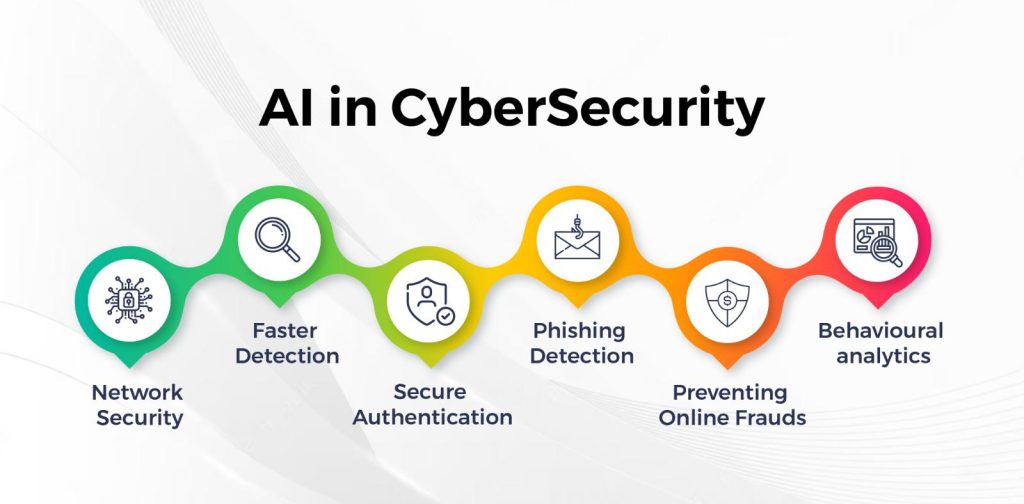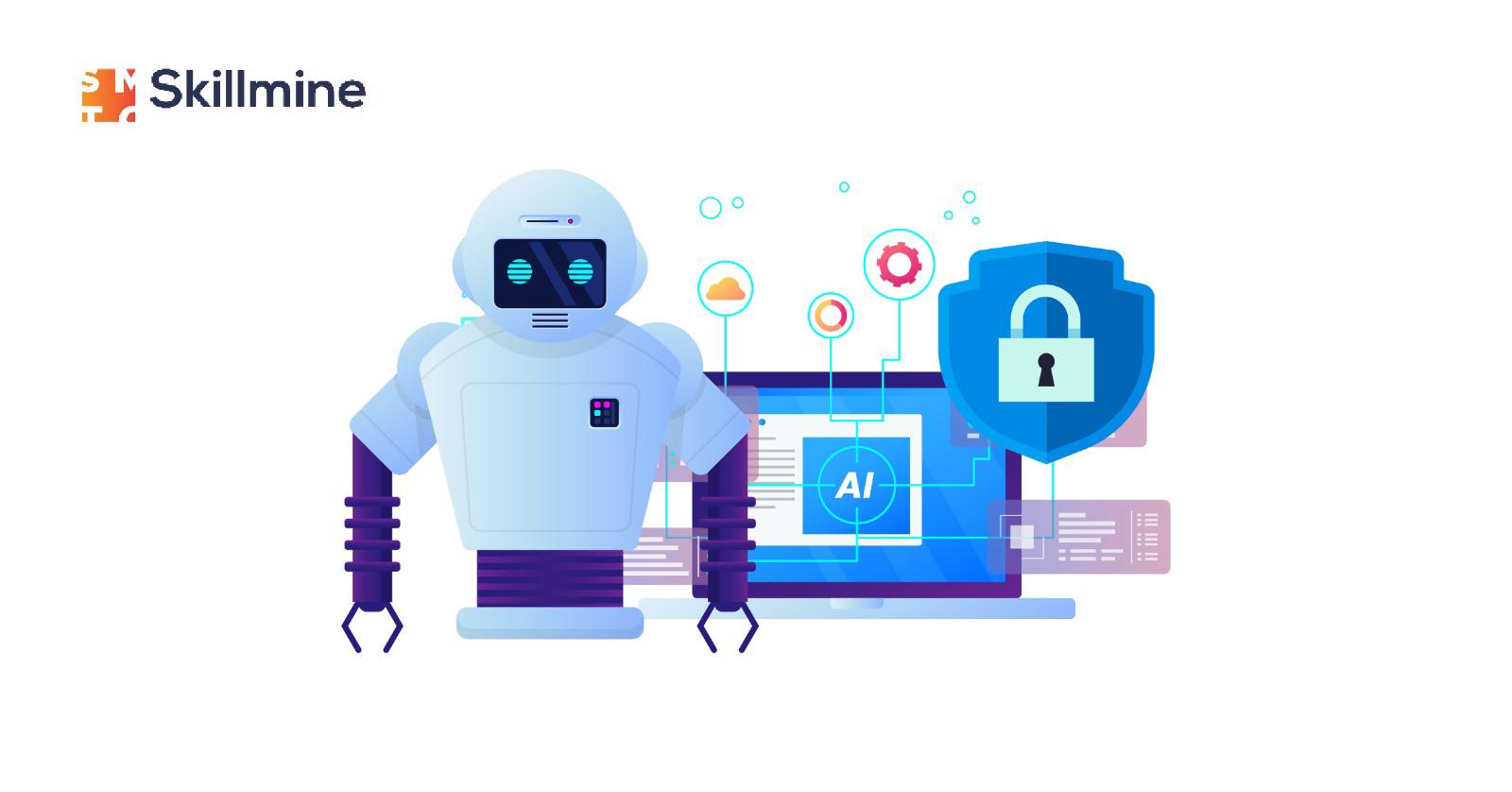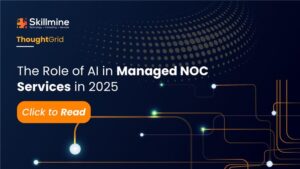Cybersecurity and Artificial Intelligence (AI) are two rapidly developing fields that are changing the way we live, work and interact with each other. A 2021 report by MarketsandMarkets says that the global Artificial Intelligence in Cybersecurity market size is expected to grow from $8.8 billion in 2020 to $38.2 billion by 2026, at a Compounded Annual Growth Rate (CAGR) of 23.3% during the forecasted period of 2020-2026. While AI has the potential to improve cybersecurity, it also poses significant threats to our digital security. Let’s take a closer look at the opportunities and threats that AI presents to cybersecurity.
Opportunities of AI in Cybersecurity
AI in Cybersecurity (Cyber Security Managed Services) could reinforce and improve cyber protection strategies. AI enables advanced threat detection, improved threat response, enhanced vulnerability assessment and better fraud detection. AI can also reduce the workload of security teams by automating routine tasks, allowing them to focus on more complex issues.

AI-powered cybersecurity companies like Skillmine use Machine Learning algorithms to detect and respond to cyber threats. Their technology uses unsupervised Machine Learning to learn what is normal behaviour for a particular network and can quickly detect anomalies that may indicate a cyber-attack. Their AI algorithms detect and respond to previously unknown and advanced cyber-attacks.
Here are some examples of AI-powered cybersecurity tools:
SIEM Tools
Security Information and Event Management (SIEM) tools are used to collect, analyze, and respond to security events. AI-powered SIEM tools use Machine Learning algorithms to analyze large amounts of data and identify patterns that may indicate a cyber-attack. These tools can detect and respond to cyber-attacks in real time, improving the organization’s security posture.
Endpoint Detection and Response (EDR) Tools
EDR tools are used to monitor endpoints and detect any suspicious activity. AI-powered EDR tools identify anomalous behaviour that may indicate a cyber-attack. These tools can quickly detect and respond to cyber-attacks, reducing the risk of a successful attack.
Network Traffic Analysis (NTA) Tools
NTA tools are used to monitor network traffic and detect any unusual activity. AI-powered NTA tools analyze network traffic and identify patterns that may indicate a cyber-attack.
Threat Intelligence Tools
Threat intelligence tools are used to collect and share information about cyber threats. These tools can provide organizations with real-time threat intelligence, helping them to prevent cyber-attacks.
Identity and Access Management (IAM) Tools
IAM tools are used to manage user identities and access to resources. AI-powered IAM tools identify anomalous behaviour that may indicate a security threat. These tools can detect and prevent unauthorized access to resources, reducing the risk of a successful cyber-attack.
Threats of AI in Cybersecurity
In 2019, a deep fake video of American politician Nancy Pelosi was circulated online, which was edited to make it appear as though she was slurring her words and speaking incoherently. The video was widely shared on social media, causing confusion and concern about Pelosi’s health and raising questions about the potential impact of deep fakes on politics and public discourse.
What are Deepfakes?
Deepfakes are a form of synthetic media that uses AI algorithms to create realistic fake images or videos. AI algorithms analyze existing images or videos of a person and then create a new video or image of that person doing or saying something they never actually did or said. Deepfakes can be used for harmless entertainment purposes, but they can also be used for malicious purposes, such as spreading disinformation or defaming individuals.
This demonstrates how AI can be used for malicious purposes, including spreading disinformation and manipulating public opinion. Let’s look at the risks associated with AI
Weaponization of AI
Cybercriminals can use AI to automate attacks, making them more effective and scalable. For example, AI-powered phishing attacks can be tailored to specific individuals, making them more convincing and harder to detect.
Adversarial attacks
Attackers can use AI to train their malware to evade detection by security tools and to find vulnerabilities in an organization’s defences.
Bias and discrimination
AI algorithms can be biased and discriminate against certain groups, making them vulnerable to cyber-attacks. For example, facial recognition systems can be biased against certain ethnic groups, making it easier for attackers to bypass security measures.
Lack of transparency
AI-powered security tools can be difficult to understand and interpret. This lack of transparency can make it hard for security teams to understand how the tools are making decisions and whether they are effective.
Conclusion
AI presents both opportunities and threats to cybersecurity (Types of Cyber security). It is important for organizations to be aware of the risks and to take appropriate measures to protect themselves against AI-powered cyber-attacks. This includes implementing AI-powered security tools, training employees on cybersecurity best practices, and regularly assessing and updating their cybersecurity defences.
Check out what Skillmine’s Cybersecurity expert, Anupam Joshi has to say about tacking cyberattacks: video link of live session recording. You may also like to read our ebook on Measures to Avoid Cyber-attacks
Looking for expert technology consulting services? Contact us today.





